Welcome to my article on how to prevent whirling disease in aquarium fish. As a fish enthusiast, I understand the importance of keeping our aquatic pets healthy and happy. Whirling disease is a serious condition that affects several species of freshwater fish, and it’s crucial to take preventive measures to avoid its potential outbreak. In this section, I will provide valuable tips on how to prevent whirling disease in your aquarium fish. By following these tips, you can ensure the optimal health of your aquatic pets.
Table of Contents
Key Takeaways
- Whirling disease is a serious condition that can affect the health and well-being of your fish
- Prevention is key to keeping your aquarium fish healthy and disease-free
- Proper tank maintenance, balanced nutrition, water quality monitoring, and stress reduction are essential in preventing whirling disease
- Introducing new fish to the aquarium should be done with caution and proper quarantine procedures in place
- If you suspect an infection, proper diagnosis and treatment options for infected fish are crucial
Understanding Whirling Disease
If you’re an aquarium enthusiast, you may have heard of whirling disease. It’s a serious illness that affects fish and can cause havoc in aquariums. In this section, I’ll explain the causes, symptoms, and consequences of whirling disease.
Causes of Whirling Disease
Whirling disease is caused by a microscopic parasite called Myxobolus cerebralis. Fish become infected when they ingest spores from the parasite, typically through infected water or food.
Symptoms of Whirling Disease
The most prominent symptom of whirling disease is erratic swimming behavior. Infected fish may swim in circles, have trouble maintaining balance, and struggle to swim upright. In some cases, infected fish may also experience a loss of color or appetite.
Consequences of Whirling Disease
If left untreated, whirling disease can have serious consequences for your aquarium. Infected fish can develop deformities, such as whirling or crooked spines, and often die prematurely. Additionally, the parasite can remain in your aquarium for years, infecting new fish and causing ongoing health issues.
Now that we understand what whirling disease is and its effects, we can move on to strategies to prevent it in our aquariums.
Maintaining a Clean and Healthy Fish Tank
A clean and healthy fish tank is essential in preventing whirling disease and other aquarium diseases. As a responsible fish owner, it’s crucial to keep your tank in tip-top shape. Here are some practical tips on proper tank maintenance:
Regular Water Changes
Changing your aquarium water regularly is the cornerstone of good tank maintenance. As fish waste and uneaten food accumulate, they release harmful toxins like ammonia and nitrate into the water, which can be harmful to your fish’s health. I recommend changing 20-25% of the water every two weeks to keep your tank clean and healthy.
Filtration System Upkeep
Regular filter maintenance is essential in keeping your aquarium water clean. Filters help to remove debris, waste, and harmful toxins from the water. I recommend cleaning your filter once a month to keep it in good working condition.
Maintaining Optimal Water Parameters
It’s essential to maintain optimal water parameters in your aquarium to prevent stress and disease in your fish. The recommended temperature range for most aquarium fish is 72°F to 82°F, and the optimal pH range is 6.5 to 7.5. I suggest testing your water regularly using a reliable test kit to ensure your water parameters are within the ideal range.
Keeping Your Tank Clean
A clean tank not only looks beautiful but also helps to prevent the growth of harmful bacteria and parasites. Regularly clean the gravel, decorations, and other tank accessories to keep your tank in good condition. I suggest using a gravel vacuum during water changes to remove debris and uneaten food from the bottom of the tank.
By following these tips, you can maintain a clean and healthy aquarium that will reduce the risk of whirling disease and other aquarium diseases.
A clean and healthy fish tank is essential in preventing whirling disease and other aquarium diseases.
Quarantining New Fish
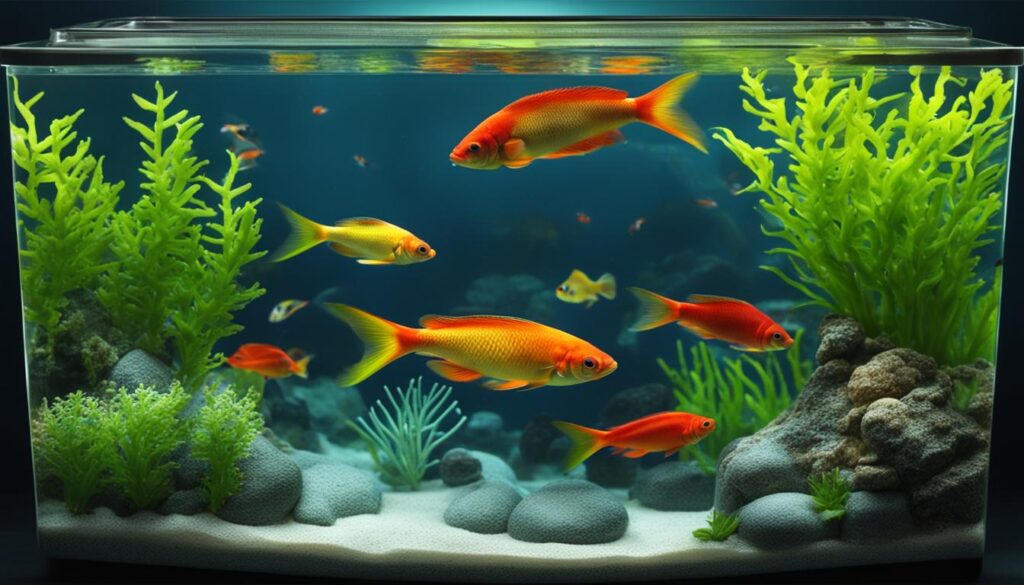
Introducing new fish to your aquarium can be exciting, but it can also be risky. New fish may carry diseases, including whirling disease, that can spread to your existing fish and harm their health. To prevent this from happening, it’s crucial to quarantine new fish before introducing them to the main tank.
Here’s a step-by-step guide on how to quarantine new fish:
- Set up a separate quarantine tank that is equipped with a filtration system and heater. The tank should be free of any ornaments or plants that may have been exposed to disease.
- Fill the quarantine tank with water from the main tank.
- Acclimate the new fish to the water in the quarantine tank, following the same process used for introducing fish to a new tank.
- Observe the new fish closely for a minimum of two weeks. Look for any signs of illness, such as unusual behavior, loss of appetite, or discoloration.
- If the new fish appear healthy after two weeks, they can be safely introduced to the main tank.
- If any signs of illness are observed, continue to monitor the new fish in quarantine and consider seeking advice from a veterinarian who specializes in fish care.
Quarantining new fish may seem like an inconvenience, but it’s an essential step in preventing the spread of diseases like whirling disease. By taking the time to properly quarantine new fish, you can protect the health of all your aquarium fish.
Providing a Balanced Diet
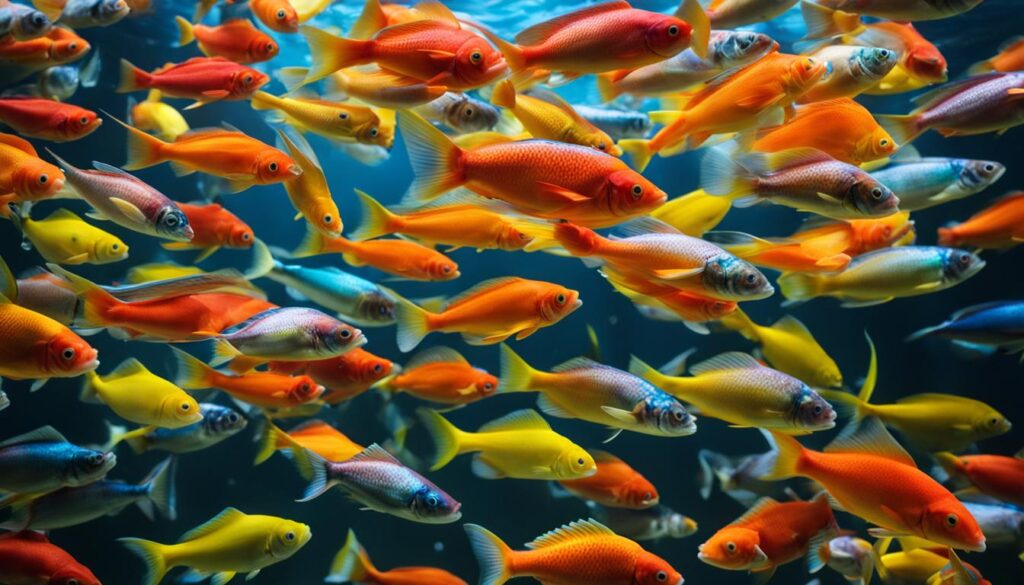
Proper nutrition is key to keeping your fish healthy and disease-free. A balanced diet that meets the specific nutritional requirements of your fish is essential for maintaining their overall well-being. Feeding your fish a varied diet that includes high-quality commercial fish food as well as live or frozen foods will provide them with the nutrients they need to thrive.
Tip: Avoid overfeeding your fish, as this can lead to obesity and other health problems. A good rule of thumb is to feed them small amounts several times a day, rather than one large feeding.
| Food Type | Benefits |
|---|---|
| Commercial fish food | Provides balanced nutrition and is convenient to use |
| Live or frozen foods (e.g. brine shrimp, bloodworms) | Provides supplemental nutrition and mimics natural feeding behavior |
It’s important to research the specific nutritional needs of your fish species and adjust their diet accordingly. For example, some fish require a higher protein diet, while others may need more plant-based foods. Consulting with a veterinarian or aquatic specialist can also help ensure that your fish are receiving the proper nutrients.
Monitoring Water Quality
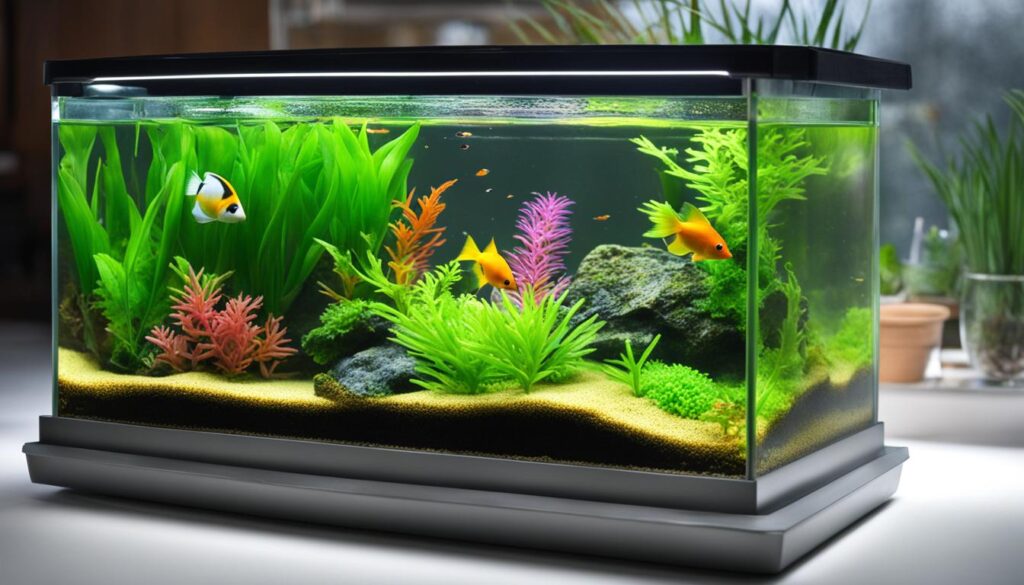
As a responsible fish owner, monitoring the water quality in your fish tank is essential to maintain their health and prevent diseases like whirling disease. Poor water quality can lead to stress, which weakens the immune system of your fish, making them more susceptible to diseases. Therefore, you should test water parameters regularly, including pH, ammonia, nitrite, and nitrate levels, to ensure optimal water quality.
The ideal pH level for most fish is between 6.5 and 7.5, but some species may require a different pH range, so it’s important to research the specific needs of your fish. High levels of ammonia and nitrite are toxic to fish and can lead to stress and disease. Therefore, you should maintain these levels at 0 ppm by performing regular water changes and avoiding overfeeding. Additionally, nitrate levels should be kept below 40 ppm, and you can use nitrifying bacteria to help convert nitrite to nitrate.
If you notice any irregularities in water parameters or the behavior of your fish, take immediate action to correct the issues. For example, if you notice a sudden spike in ammonia levels, do a water change immediately and monitor the situation closely. In some cases, adding an aquarium salt mix to the water can help to mitigate stress and improve overall water quality.
Remember, maintaining optimal water quality is crucial for preventing whirling disease and other health problems in your fish. Make sure to test water parameters regularly and take action promptly if you notice any issues.
Avoiding Stress and Overcrowding
Creating a stress-free environment for your fish is crucial to maintaining their overall health and preventing diseases like whirling disease. Stress weakens fish immune systems, making them more susceptible to infection. Therefore, it’s important to minimize stressors in the aquarium.
One way to reduce stress is to avoid overcrowding the tank. Fish need ample space to swim and hide, and overcrowding can lead to aggressive behavior and territorial disputes. A good rule of thumb is to have no more than one inch of fish per gallon of water.
Another way to reduce stress is to provide adequate hiding places. Fish feel more secure when they have places to hide, so consider adding plants, rocks, or other decorations to the tank.
Minimizing Noise and Vibration
Noise and vibration can also cause stress in fish. Avoid placing the aquarium near loud speakers or appliances like washing machines or dishwashers. Additionally, avoid tapping on the tank or making sudden movements around it, which can startle the fish.
If you have an external filter or air pump, make sure it’s not too noisy or vibrates excessively. If it does, consider replacing it with a quieter model.
Maintaining Water Quality
Poor water quality can also cause stress in fish and make them more susceptible to disease. Make sure to test the water regularly and maintain optimal water parameters. This includes monitoring ammonia and nitrate levels and maintaining a stable pH balance.
Regular water changes are also essential for maintaining water quality. Aim to change 25% of the water every two weeks to keep the water fresh and clean.
Providing a Balanced Diet
Proper nutrition is another key factor in keeping fish healthy and stress-free. Make sure to provide a balanced diet that meets the nutritional needs of your fish. This includes providing a variety of foods, such as flakes, pellets, and frozen or live foods.
Overfeeding can also cause stress and lead to health problems, so be sure not to overfeed your fish. A good rule of thumb is to feed small amounts two to three times a day.
“Stress weakens fish immune systems, making them more susceptible to infection.”
Treating Infected Fish
If despite your best efforts, you notice symptoms of whirling disease in your fish, it’s crucial to take swift action to prevent the disease from spreading to other healthy fish in your aquarium. Early diagnosis and prompt treatment can go a long way in improving the chances of a full recovery for your infected fish.
The first step is to isolate the infected fish to prevent the spread of the disease. You can use a separate quarantine tank or plastic container to keep the infected fish and monitor its health closely. Ensure the tank or container has sufficient aeration and filtration to maintain optimal water quality.
Next, it’s important to consult a veterinarian or a fish health specialist to confirm the disease diagnosis and discuss the appropriate treatment options. The treatment may vary depending on the severity of the infection and the type of fish you have.
“Early diagnosis and prompt treatment can go a long way in improving the chances of a full recovery for your infected fish.”
In some cases, the veterinarian may recommend using anti-parasitic medications to kill the parasites causing the disease. These medications can come in the form of bath treatments or oral medications that are added to the fish’s food. It’s important to follow the dosage instructions carefully and complete the full course of treatment as prescribed.
During the treatment period, you should continue monitoring the infected fish’s health and water quality closely. It’s also important to maintain proper hygiene, including washing your hands carefully after handling the infected fish or its tank water. This can help prevent the spread of the disease to other healthy fish in your aquarium.
Conclusion
As an aquarium fish owner, I understand the importance of keeping my aquatic pets healthy and disease-free. Whirling disease is a serious condition that can affect the well-being of your fish, but by following the tips discussed in this article, you can significantly reduce the risk of infection.
To prevent whirling disease in your aquarium fish, it’s crucial to maintain a clean and healthy fish tank, quarantine new fish, provide a balanced diet, monitor water quality, and avoid stress and overcrowding. These preventative measures can help keep your fish healthy and thriving.
If you suspect an infection, it’s crucial to take quick and proper action. By diagnosing and treating infected fish as soon as possible, you can prevent the spread of disease to other fish in your tank.
Overall, preventing whirling disease in aquarium fish requires consistent care and attention. By implementing the tips discussed in this article, you can ensure the optimal health and well-being of your beloved fish for years to come.
FAQ
What is whirling disease?
Whirling disease is a serious condition that can affect the health and well-being of aquarium fish. It is caused by a parasite called Myxobolus cerebralis, which affects the nervous system of the fish, leading to characteristic swimming patterns.
How do I prevent whirling disease in my aquarium fish?
To prevent whirling disease, it is important to maintain a clean and healthy fish tank, quarantine new fish before introducing them to the main tank, provide a balanced diet, monitor water quality, and avoid stress and overcrowding in the aquarium.
What are the symptoms of whirling disease?
The symptoms of whirling disease include fish swimming in spiral patterns, loss of balance, and a decrease in overall activity. In advanced cases, the fish may also exhibit deformities and experience difficulty eating.
Can whirling disease be cured?
Unfortunately, there is no cure for whirling disease. Once a fish is infected, it is unlikely to recover fully. It is best to focus on prevention and implementing measures to reduce the risk of infection.
How often should I perform water changes in my fish tank?
Regular water changes are essential for maintaining a clean and healthy fish tank. It is recommended to perform partial water changes of around 25% every 1-2 weeks, depending on your specific tank setup and the number of fish.
What should I feed my fish to prevent whirling disease?
Providing a balanced diet is crucial for fish health and disease prevention. Offer a variety of high-quality commercial fish foods, including flakes, pellets, and frozen options. It is also beneficial to occasionally supplement their diet with live or freeze-dried foods.
How can I reduce stress in my fish tank?
To reduce stress in your fish tank, ensure that the aquarium is properly set up with adequate hiding spots, provide a suitable environment with appropriate water temperature and lighting, avoid sudden changes in water parameters, and minimize disturbances or loud noises near the tank.
What should I do if I suspect my fish has whirling disease?
If you suspect your fish has whirling disease, it is recommended to isolate the infected fish in a separate tank or container to prevent disease transmission. Consult with a veterinarian or knowledgeable fish expert for proper diagnosis and treatment options.
Can I still keep fish if whirling disease is present in my area?
If whirling disease is present in your area, it is still possible to keep fish by practicing strict preventive measures. By following the tips mentioned earlier, you can significantly reduce the risk of whirling disease and provide a safe and healthy environment for your fish.
I am a passionate aquarist with over 30 years of hands-on experience in fishkeeping. My journey began at a young age, collecting fish from the wild and learning through experimentation. Specializing in tropical fish, I bring a deep understanding of the hobby to FishKeepingMadeSimple. The site provides honest, detailed reviews of essential products and accessories to help fellow enthusiasts create the best environments for their fish.

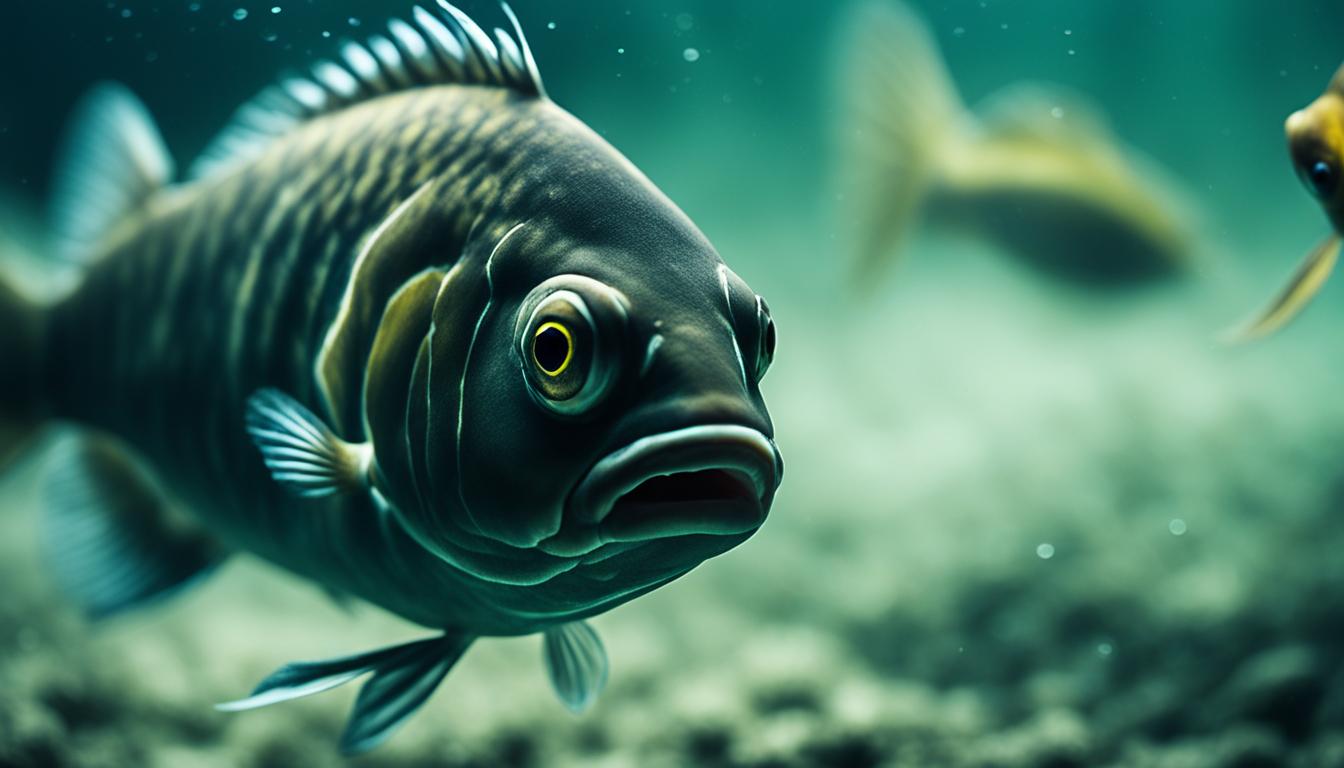
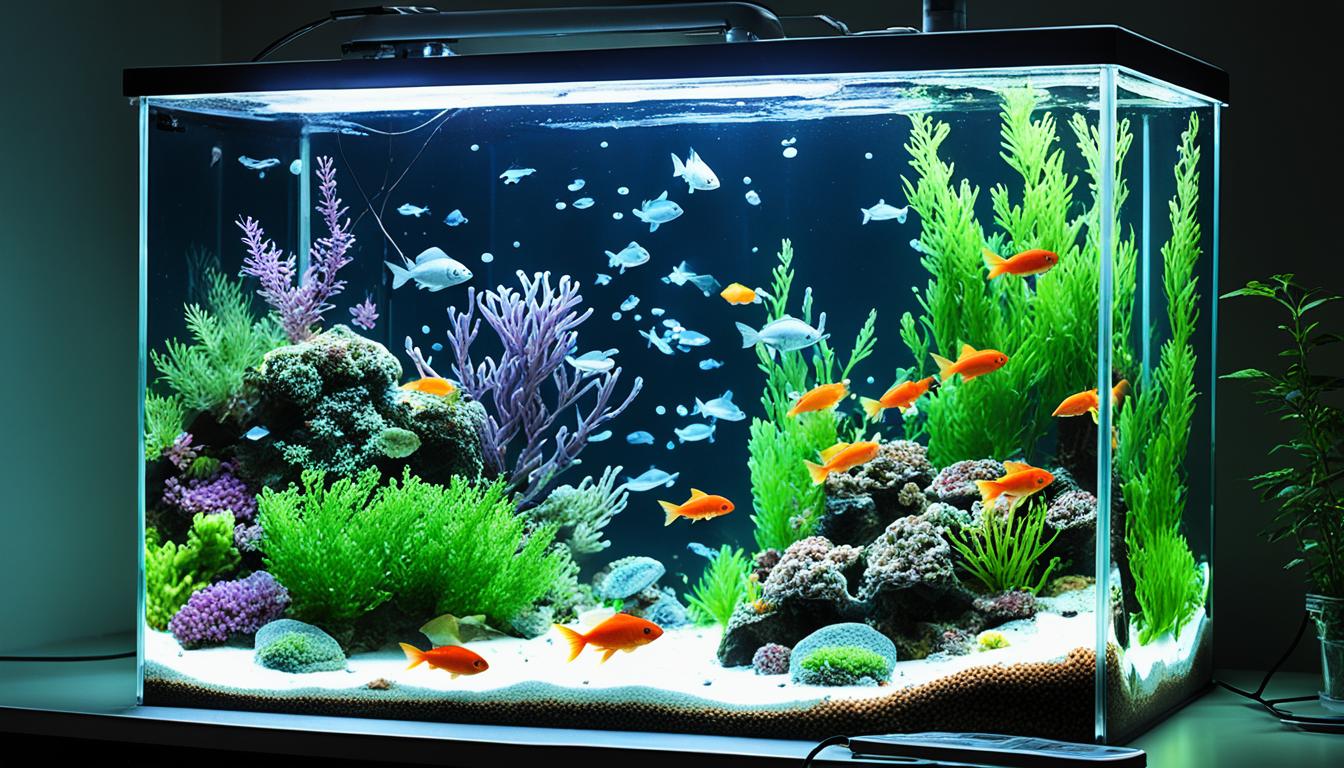
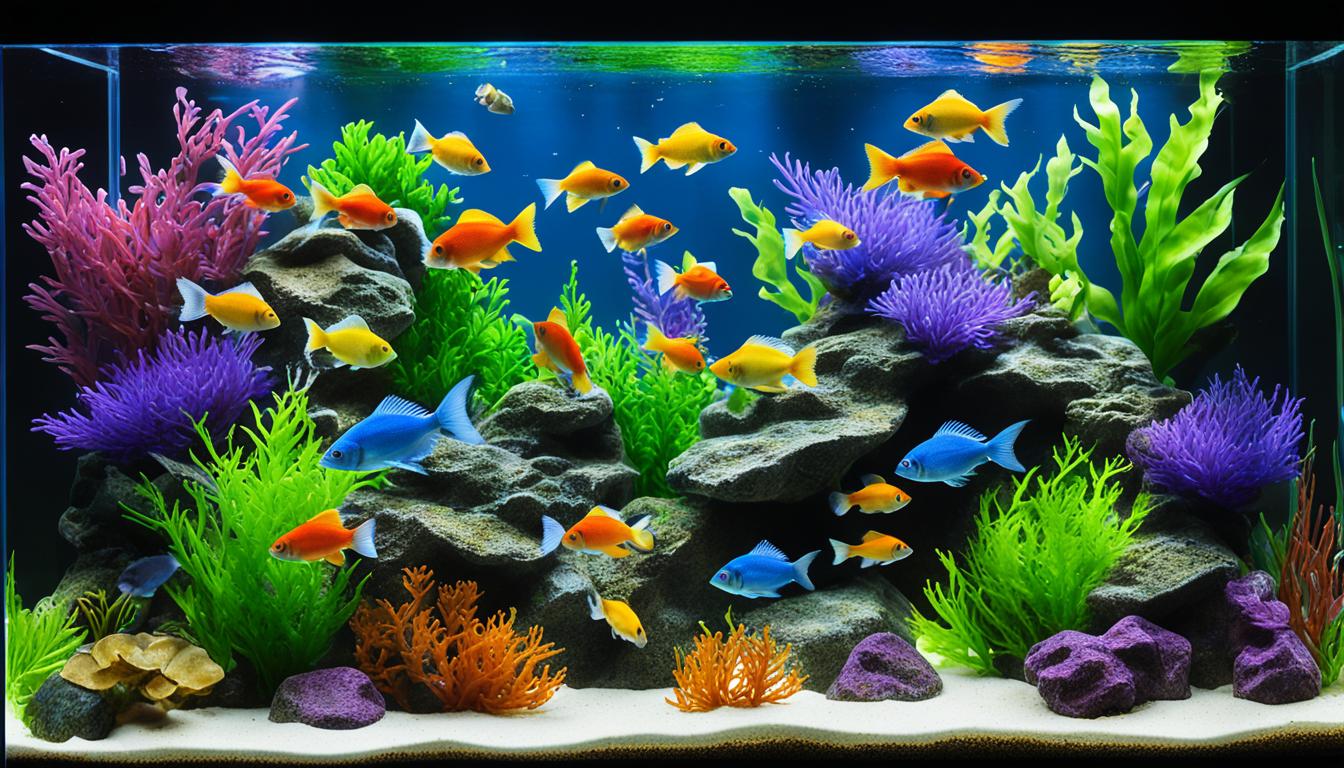






[…] for effectively treating ich (white spot disease) and other external protozoan parasites in aquarium fish. This treatment is also effective against mild fungal infections. The active ingredients in Ich-X […]